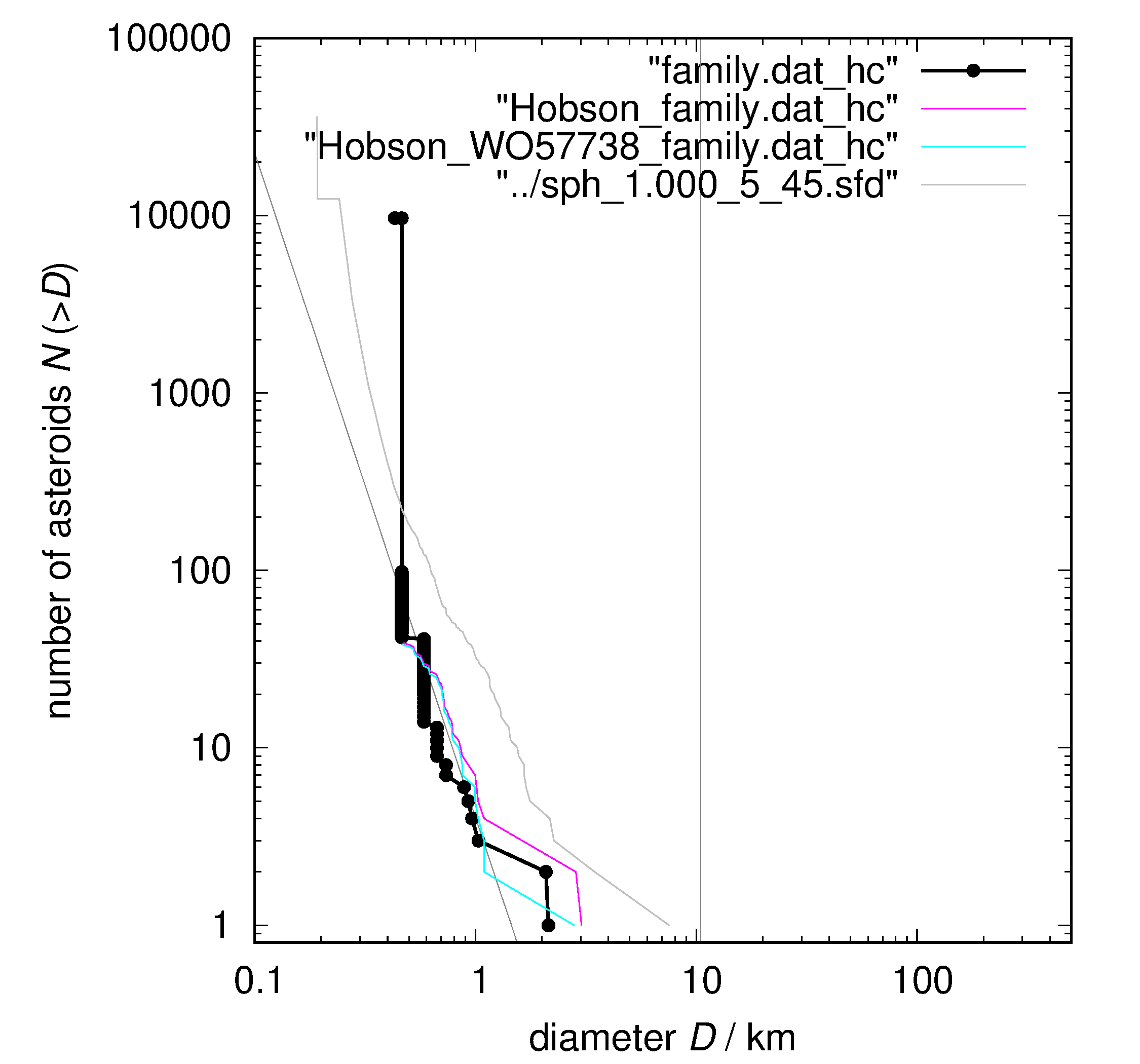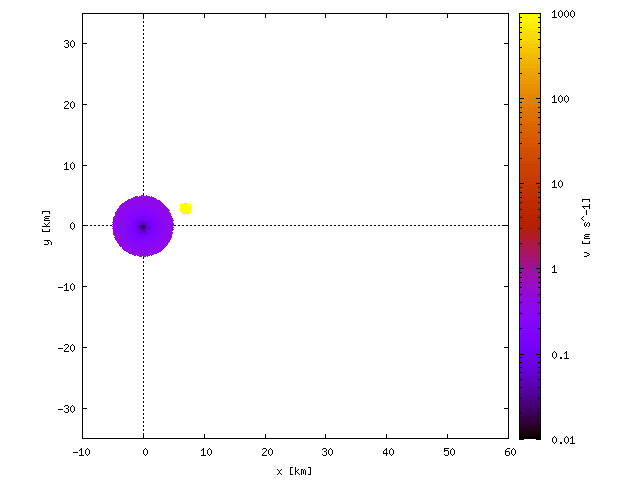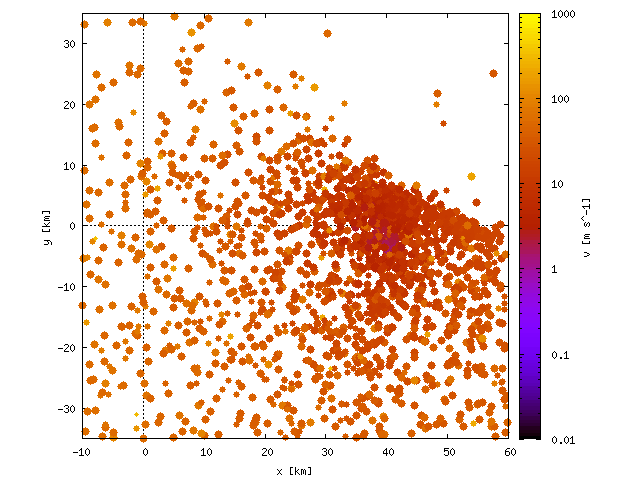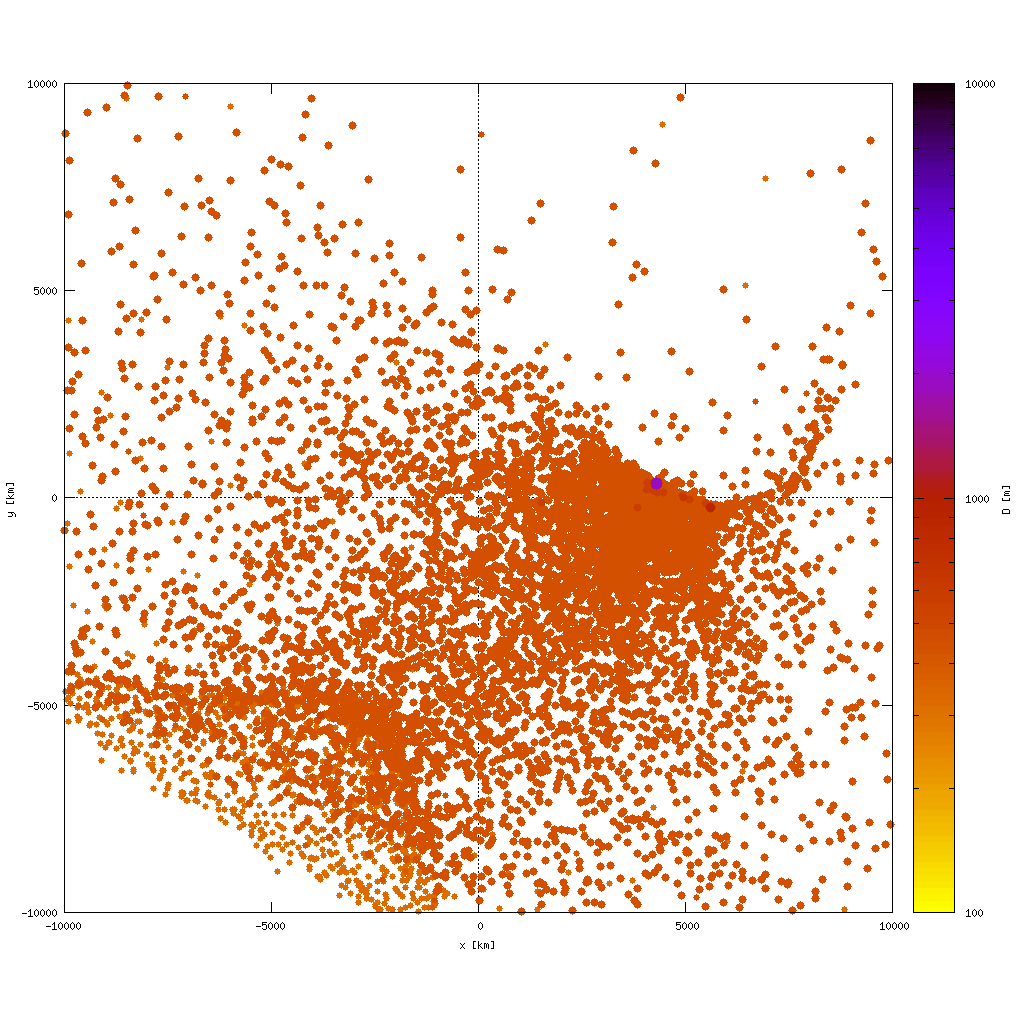



















See also: Back
Testing of resolution, time span, and rheology/merging parameters:
| hobson12_10_2.0_5_30 | hobson12_10_2.0_5_30__DRUCKERPRAGER | hobson12_10_2.0_5_30__ACOUSTICFLUIDISATION | hobson12_10_2.0_5_30__1e5 | hobson12_10_2.0_5_30__1e5_1e6s | hobson12_10_2.0_5_30__1e5_PERFECTMERGING | |
| SFD |  |
 |
 |
 |
 |
 |
| N = 10^4, hobson12.sph | See Y(P) -- Drucker-Prager is lower stress limit than von Mises; LR is more damaged, dispersed, generally less reaccumulation... | ... with acoustic fluidisation, even less reaccumulation; resolution limited? | N = 10^5 -- Reaccumulation is totally different for high resolution! no LR, LF too small :-( cf. hobson12.sph | Even 10 times longer time span does NOT help! Consequently, it's probably the effect of merge (v, ω) limits? Particles cannot merge, if they bounce/orbit each other. Shall we construct SFD/LR/LF for bound particles ("clouds")? Shall we add some dissipation/friction? Well, the angular momentum can be only transferred, e.g. by triple encounters... | Hmm, perfect merging helps, but there still is no LR ~ 3 km, although LF is fit. | |
| IC's |  |
 |
 |
 |
||
| fragmentation (1000 s), SPH w. self-gravity, von Mises rheology |  |
 |
 |
 |
||
| reaccumulation (10^5 s), N-body, merge (v, ω) limit = (4, 1) |  |
 |
 |
 |
 |
 |
| cf. LR, LF | notably different structures in the velocity field | 10 time span → dtto axes range; the velocity field practically does not evolve |
Conclusion: It is very resolution-dependent! If simulation w. N = 10^5 are correct, we shoud prefer a low-energy impact...